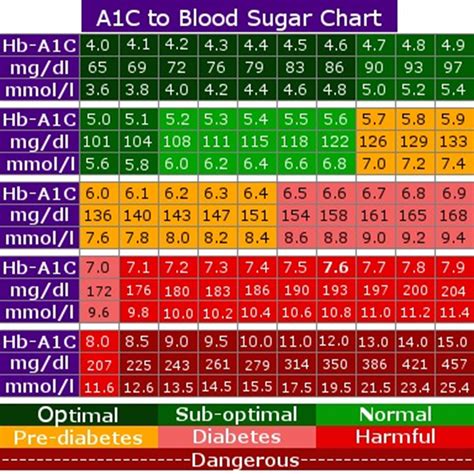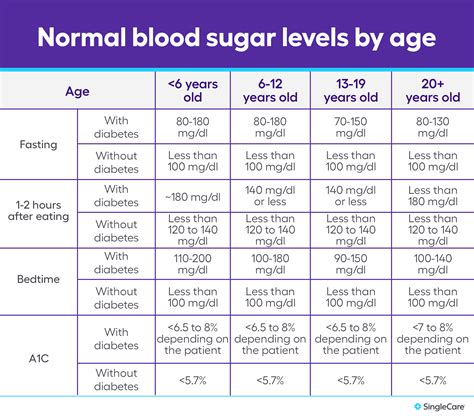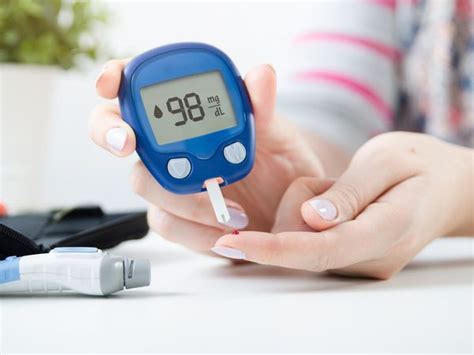Intro
Manage your childs blood sugar levels with confidence. Our comprehensive guide provides a detailed child blood sugar levels chart, explaining normal ranges, symptoms of high and low blood sugar, and how to monitor and regulate levels. Learn how to keep your childs diabetes under control and ensure a healthy future.
As a parent, managing your child's blood sugar levels can be a daunting task, especially if they have been diagnosed with diabetes. Monitoring and maintaining healthy blood sugar levels is crucial to prevent complications and ensure your child's overall health and well-being. In this article, we will provide a comprehensive guide to help you understand child blood sugar levels chart, including what is normal, what is not, and how to manage your child's blood sugar levels effectively.

Understanding Blood Sugar Levels in Children
Blood sugar levels, also known as blood glucose levels, refer to the amount of glucose present in the blood. Glucose is a type of sugar that serves as the primary source of energy for the body's cells. In children, blood sugar levels can fluctuate throughout the day due to various factors, such as diet, physical activity, and hormone levels.
Normal Blood Sugar Levels in Children
The American Diabetes Association (ADA) recommends the following blood sugar level ranges for children:
- Fasting blood sugar levels: 70-100 mg/dL
- Before meals: 70-140 mg/dL
- After meals: Less than 180 mg/dL
- At bedtime: 100-140 mg/dL
Keep in mind that these are general guidelines, and your child's healthcare provider may recommend different target ranges based on their individual needs.
Child Blood Sugar Levels Chart
Here is a sample blood sugar levels chart for children:
| Time | Blood Sugar Level (mg/dL) |
|---|---|
| Fasting | 70-100 |
| Before breakfast | 70-140 |
| After breakfast | Less than 180 |
| Before lunch | 70-140 |
| After lunch | Less than 180 |
| Before dinner | 70-140 |
| After dinner | Less than 180 |
| At bedtime | 100-140 |

How to Manage Your Child's Blood Sugar Levels
Managing your child's blood sugar levels requires a combination of healthy lifestyle habits, medication (if prescribed), and regular monitoring. Here are some tips to help you manage your child's blood sugar levels effectively:
1. Healthy Eating Habits
- Encourage your child to eat a balanced diet that includes a variety of whole foods, such as fruits, vegetables, whole grains, lean proteins, and healthy fats.
- Avoid sugary drinks and foods high in added sugars.
- Choose complex carbohydrates, such as whole grains, fruits, and vegetables, which are rich in fiber and take longer to digest.
2. Regular Physical Activity
- Encourage your child to engage in regular physical activity, such as walking, running, swimming, or dancing.
- Aim for at least 60 minutes of moderate-intensity physical activity per day.
3. Medication Adherence
- If your child has been prescribed medication to manage their blood sugar levels, ensure they take it as directed by their healthcare provider.
- Monitor your child's blood sugar levels regularly to adjust medication dosages as needed.
4. Regular Monitoring
- Use a glucometer to check your child's blood sugar levels regularly, especially before meals and at bedtime.
- Keep a log of your child's blood sugar levels to track patterns and identify areas for improvement.
Common Blood Sugar Level Mistakes to Avoid
Here are some common mistakes to avoid when managing your child's blood sugar levels:
1. Not Monitoring Blood Sugar Levels Regularly
- Regular monitoring is crucial to identify patterns and make adjustments to your child's treatment plan.
2. Not Adjusting Medication Dosages
- Failing to adjust medication dosages can lead to blood sugar levels that are too high or too low.
3. Not Encouraging Healthy Lifestyle Habits
- Healthy lifestyle habits, such as a balanced diet and regular physical activity, are essential to managing blood sugar levels effectively.

Conclusion
Managing your child's blood sugar levels requires a combination of healthy lifestyle habits, medication adherence, and regular monitoring. By following the tips outlined in this article and using the child blood sugar levels chart as a guide, you can help your child maintain healthy blood sugar levels and prevent complications. Remember to work closely with your child's healthcare provider to develop a personalized treatment plan that meets their unique needs.
What is a normal blood sugar level for children?
+A normal blood sugar level for children is between 70-100 mg/dL fasting and less than 180 mg/dL after meals.
How often should I check my child's blood sugar levels?
+Check your child's blood sugar levels regularly, especially before meals and at bedtime, to track patterns and identify areas for improvement.
What are the signs of high blood sugar levels in children?
+Signs of high blood sugar levels in children include increased thirst and urination, fatigue, blurred vision, and stomach pain.
We hope this article has provided you with a comprehensive guide to managing your child's blood sugar levels. If you have any further questions or concerns, please don't hesitate to reach out to your child's healthcare provider.
